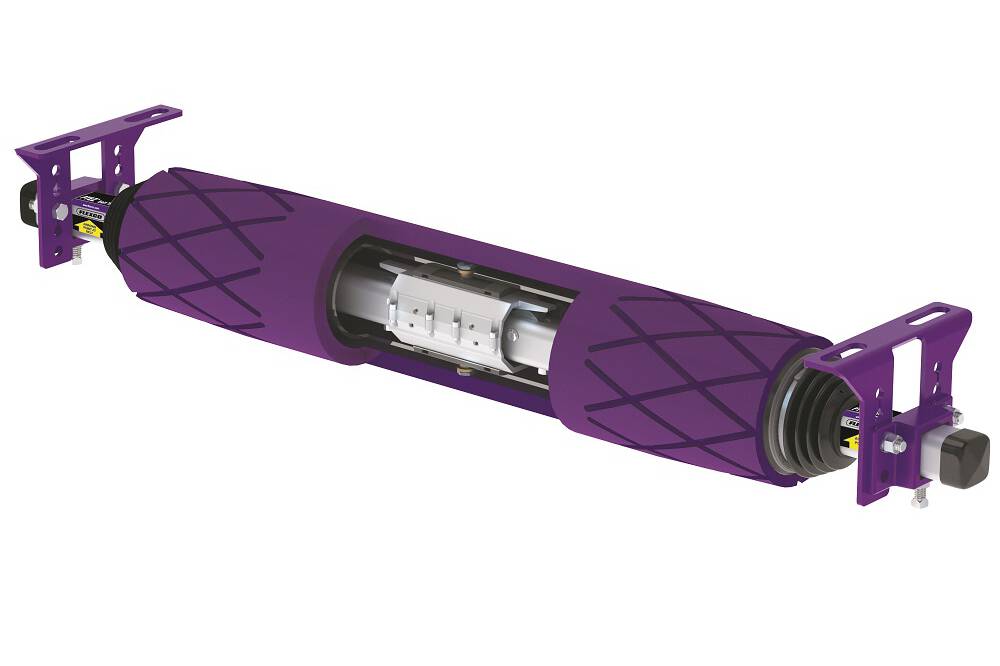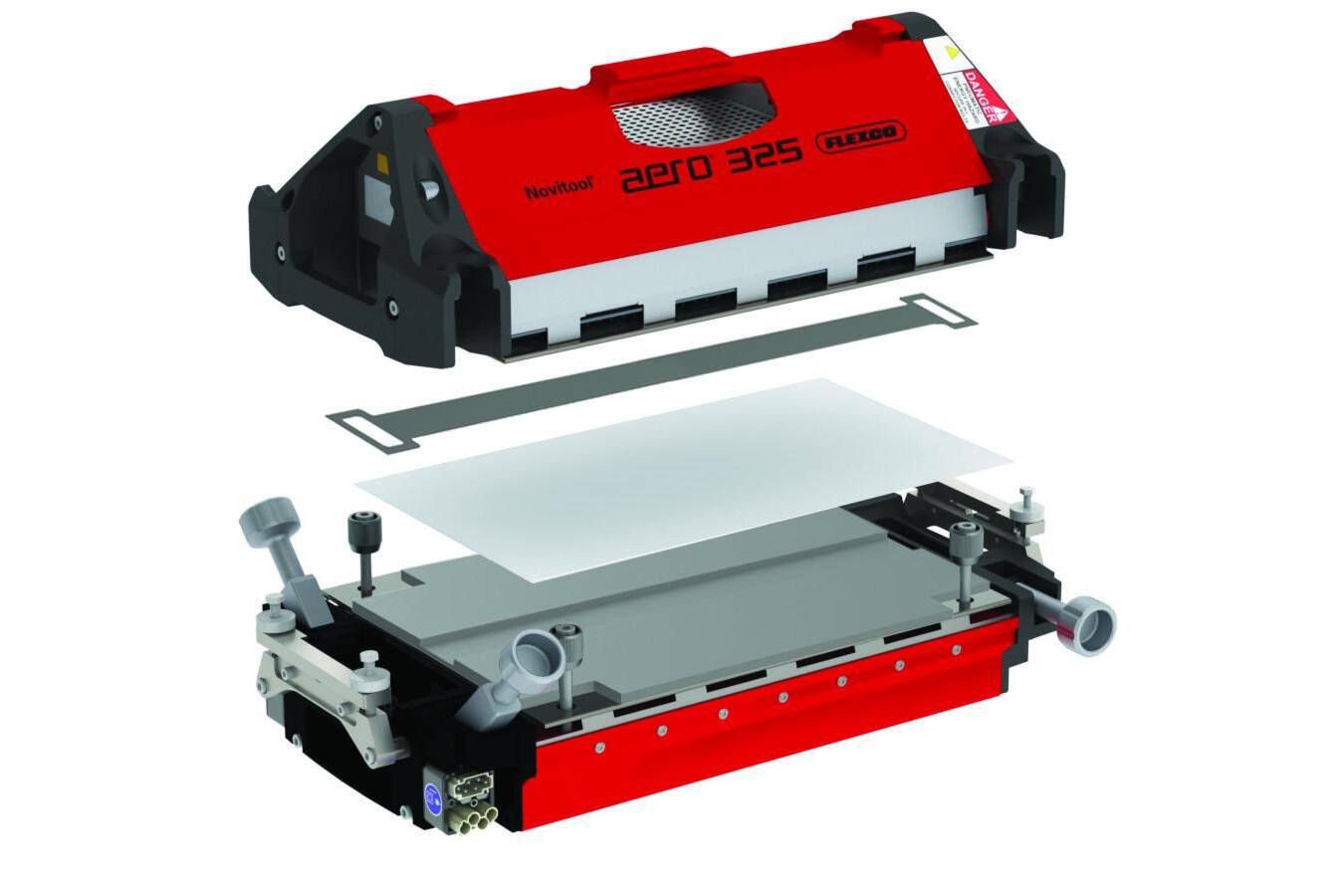Cleaners from Flexco bring more quality to food production
Precleaners and secondary cleaners from Flexco Europe save costs for food industry manufacturers in the long term.
Everything from bread to pizza dough: Cleaners by Flexco Europe bring more quality to food production
Belt conveyors used in the food industry must be spotlessly clean and free of any food debris that may adhere to the return side of the belt. This material, known as carryback, can result in contaminated products, require expensive cleaning that causes long downtimes, and prevent companies from complying with food safety regulations. Companies frequently manufacture cleaners themselves to avoid these problems. However, these cleaners do not meet industry requirements. Flexco Europe offers precleaners and secondary cleaners that save companies high costs in the long term.
A leading American food manufacturer found that the sticky icing was trickling onto its breakfast pastries as it should during production but also found its way onto the conveyor belt, where it clogged the rollers. The icing was also an ideal breeding ground for bacteria. Employees had to repeatedly clean and disinfect the belt. The sticky residues also caused belt run errors, and the abrasive sugar caused premature wear on the components. The personnel tried to prevent this carryback using self-manufactured cleaners, but they still had to change damaged conveyor belts every two weeks. An American snack food manufacturer tried using self-manufactured cleaners to remove moist, sticky dough residue that had spilled onto the conveyor belt during the manufacturing process. However, the stubborn spills kept occurring, resulting in significant product losses. A confectionery manufacturer also found increasing amounts of molasses carryback forming on its production line. The precleaner was not producing the desired effect, with the result that the carryback was collecting around the conveyor structure.
“Carryback occurs when materials stick to the return side of the conveyor,” explains Harry Schiminski from Product Management at Flexco Europe. “This can be costly for the operator if it’s not removed.” For example, product losses occur, and there is excessive downtime because the staff has to repair or disinfect the conveyor belts. In addition, there are cleaning costs, plus material overflow that ends up on the floor, posing a slip hazard for employees. “All this ultimately affects the company’s competitiveness,” says Harry Schiminski.
The problem with self-manufactured cleaners
Manufacturers often try to make their own cleaners. As inexpensive as this solution is, these cleaners don’t produce the desired results. “The cleaner must precisely exert the proper pressure on the conveyor belt,” explains Flexco expert Schiminski. If the pressure is too weak, the cleaning effect is insufficient, and residue accumulates on the belt and components. This is why tension is a decisive factor – self-manufactured cleaners often press too hard, damaging the conveyor belt and belt splices. Blade material that is too rigid can also cause damage. Some conveyors experience fluctuations in the belt or drum during operation. A rigid tensioning system can no longer work effectively. “The contact between the cleaner blade and the conveyor belt must always be consistent,” explains Schiminski. “A cleaner that’s not doing a proper job quickly gives operators a false sense of security.”
Contamination hazard
Products contaminated by carryback often result in plant operators not being able to meet regulatory cleanliness requirements. The authorities impose stiff fines in these cases. One single product recall can even ruin a company. Legal requirements cannot be met with cleaners manufactured in-house “There’s too much technical know-how involved in cleaner manufacture and operation,” says Schiminski. If an operator uses a rough material for a cleaner, it will have tiny invisible bumps. Material quickly accumulates in the gaps, providing a breeding ground for bacteria. The installation location is also crucial since personnel must easily access the cleaner to change or disinfect it for cleaning. “If this process is too complicated for the technician, it will increase downtime,” Schiminski says. This also applies if a cleaner has to be removed as part of plant maintenance or the cleaner blades have to be replaced because their edges are worn.
Advantages of a high-quality cleaner
“We offer cleaners that are a much cheaper alternative to in-house manufactured solutions in the long run,” promises the Flexco expert. They reliably remove carryback on conveyor belts, eliminating the need for manual cleaning. The American snack manufacturer mentioned above now relies on Flexco Europe’s FGP precleaner to remove the carryback of moist, sticky dough from the conveyor belts. The FGP ensures the best possible contact between the cleaner blade and conveyor belt at all times, maximizing the cleaning effect. The cleaner blade is optionally available in a material for use with metal detectors for additional protection against food contamination. The surfaces are smooth, stainless steel or food-grade plastics, and bacteria can hardly adhere and multiply on the material. All the internal angles are also rounded to make disinfection easier.
This solution reduced the snack manufacturer’s material losses by 60 percent compared to the previously used cleaner. “Our FGP precleaner is approved for food processing by the USDA and the BISCC,” Schiminski points out.
Flexco Europe offers yet another efficient solution with its FGS food-grade secondary cleaners made of solid stainless steel components. The company uses FDA-compliant, food-grade plastic for the cleaner blade, also available in a version for use with metal detectors upon request. A soft polyurethan lip allows the blade to be used on uneven or soft belt surfaces. Both the FGP and the FGS cleaners are compatible with continuous and mechanically linked belts, and both meet the requirements of EU 1935-2004.
Reduced maintenance time
Service technicians can quickly remove and reinstall both the FGP and the FGS for regular cleaning and disinfection. Likewise, cleaner blades can be quickly and easily replaced and tensioned, significantly reducing maintenance effort and costs. “The cleaner blade flips up and back into its original position – the technician doesn’t have to remove any other parts,” explains Schiminski. “This reduces the time needed to clean or replace the cleaner blade.” The FGP and FGS are designed with spacers, allowing cleaning without removing the endplates.
Standards met
Food and feed manufacturers exporting to the US must increasingly comply with the US Food Safety Modernization Act (FSMA). The FSMA stipulates that food safety systems include microbiological testing and verification procedures, which clearly show that food is being produced and stored in a safe environment. “With our FGP and FGS cleaners, manufacturers are helping to meet these requirements,” says Schiminski. “They facilitate the normal inspection process and reduce liability risks if problems arise.”
Flexco Europe designed and manufactured the two cleaners to meet or exceed baking industry standards. Both cleaners are now used for bread and pizza dough production in many bakeries worldwide.


